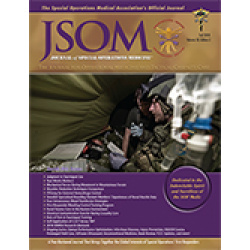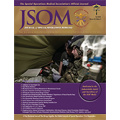Facial Trauma Care in the Austere Environment
Farber SJ, Kantar RS, Rodriguez ED 18(3). 62 - 66 (Journal Article)
As the United States continues to increase its use of Special Operations Forces worldwide, treatment of craniomaxillofacial (CMF) trauma must be adapted to meet the needs of the warfighter. The remoteness of Special Operations can result in potentially longer times until definitive treatment may be reached. A significant portion of Servicemembers incur injury to the CMF region (42%). Severe CMF trauma can result in substantial hemorrhage and airway compromise. These can be immediately life threatening and must be addressed expeditiously. Numerous devices and techniques for airway management have been made available to the forward provider. A thorough review of nonsurgical and surgical airway management of the patient with facial injury for the forward provider and providers at receiving facilities is provided in this article. Techniques to address flail segments of the facial skeleton are critical in minimizing airway compromise in these patients. There are many methods to control hemorrhage from the head and neck region. Hemorrhage control is critical to ensure survival in the austere environment and allow for transport to a definitive care facility. Associated injuries to the cervical spine, globe, skull base, carotid artery, and brain must be carefully evaluated and addressed in these patients. Management of vision- threatening orbital compartment syndrome is critical in patients with CMF injuries. Because the head and neck region remains relatively vulnerable in the warfighter, combat CMF trauma will continue to occur. Forward providers will benefit from a review of the acute treatment of CMF traumatic injury. Properly triaging and treating facial injuries is necessary to afford the best chance of survival for patients with a devastating combat CMF injury.


 English
English 




